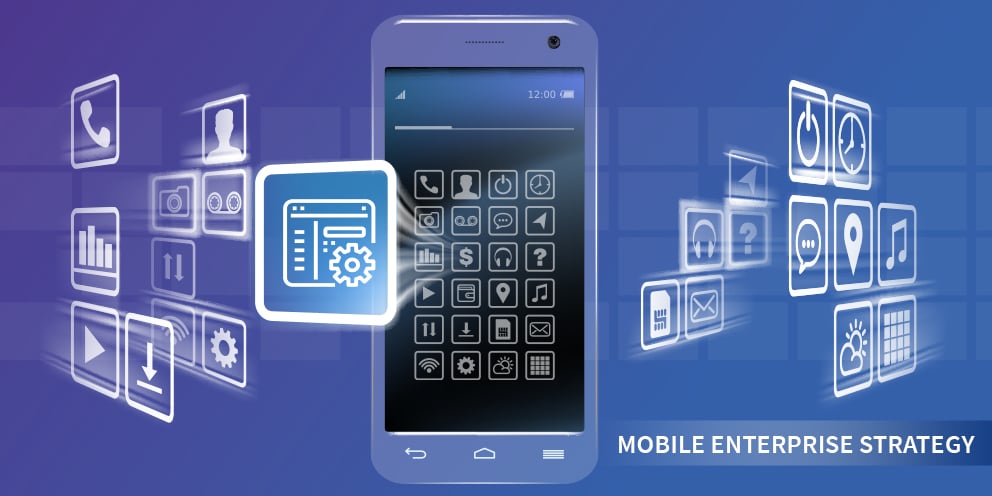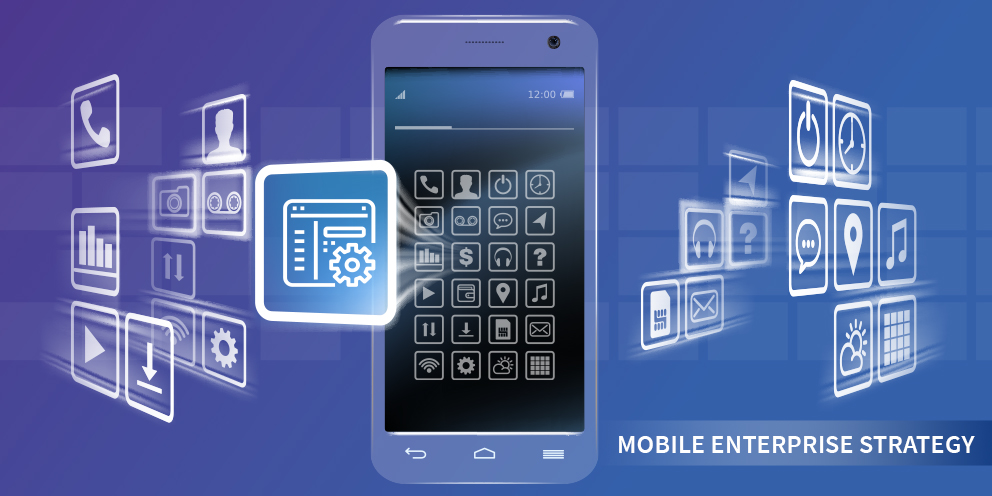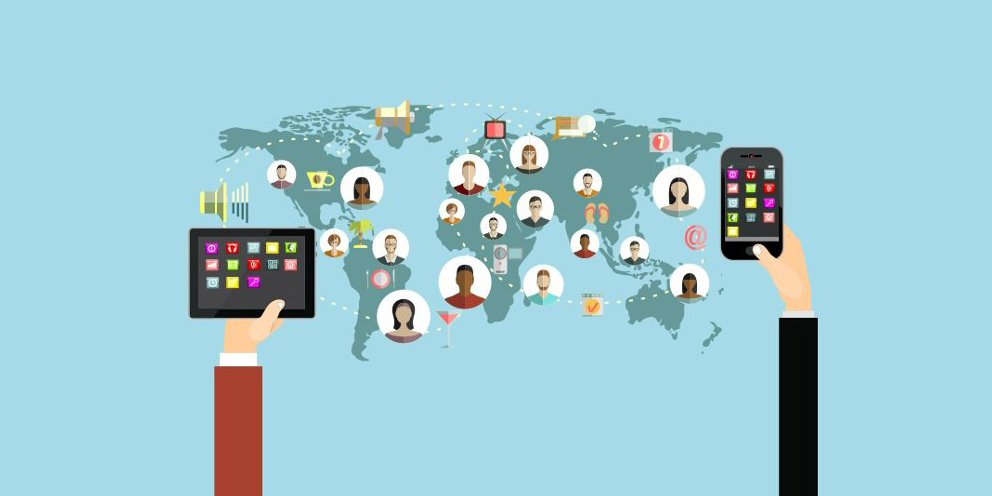

 We can remember a time when automation was so expensive and hard to implement that the idea of getting technology anywhere but your IT department was unthinkable. We didn’t think about user satisfaction because there were no alternatives. Getting new technology took years.
We can remember a time when automation was so expensive and hard to implement that the idea of getting technology anywhere but your IT department was unthinkable. We didn’t think about user satisfaction because there were no alternatives. Getting new technology took years.
Today we have a different problem. It is easy for any business function or department to find mobile apps that help people get work done by visiting the App Store or Google Play Store. Then, we strong-arm IT into supporting our devices and connecting us to our enterprise applications. Our business platforms in Marketing, Finance, Logistics, Human Resources, and everywhere else give us mobile apps our IT departments don’t even know about.
CIOs everywhere have nightmares of leaking data and ever-growing support demands. It seems like a modern “Wild West” where everyone has a mobile device and isn’t afraid to use it.
The easy availability of mobile apps for personal consumption has created a demand for the same ease of use in daily work. In the consumer app market, most applications are failures. On average, only five percent of users still use an app 90 days after installing it. Most apps are deleted after first use.
Things are no better in business apps:
The path ahead requires strategy and governance, and enterprise mobile strategy should be an integral part of the business plan.
The future of mobile is changing the way we communicate and work, and it extends far beyond consumer marketing. In the modern enterprise, we use mobile devices for everything we do, and that includes interacting with partners, suppliers, distributors, and each other. Moreover, it is now a necessity for workplace learning.
As you fold your mobile operations into your digital strategy and data governance, we want to offer a few considerations that may help guide your efforts.
The wave of technology we experience now is only the beginning of the changes we will see in our lifetimes. We hope we have given you some useful things to think about as you prepare for your digital future.
References:
 A couple of years ago, we met the wave of news about a mass movement to eliminate performance evaluations with skepticism. Seeking another opinion, we reached out to former colleague Rob Budzinski at SuccessFactors. Rob’s answer was succinct. He said most companies need evaluation numbers for compensation and compliance, and he didn’t really expect much change.
A couple of years ago, we met the wave of news about a mass movement to eliminate performance evaluations with skepticism. Seeking another opinion, we reached out to former colleague Rob Budzinski at SuccessFactors. Rob’s answer was succinct. He said most companies need evaluation numbers for compensation and compliance, and he didn’t really expect much change.
Although we see a lot of publicity about eliminating annual reviews, we have not seen wholesale change. According to CEB Global, 49% of HR leaders removed ratings or are considering it, but only 6% have. Those leaders may be having second thoughts. In May of 2016, CEB reported that when ratings are removed,
In short, many managers cannot operate without ratings to support the conversations. In September of 2016, we wrote about how Gallup’s 2015 State of the American Manager report showed how most managers are unable to lead because few have the talent. We concluded then that if you want to improve performance, you need to hire and promote talented managers and support the ones you have.
We still need ratings to make decisions and defend against potential adverse actions. But cultures are changing, and we see positive trends.
We were recommending these actions to our clients fifteen years ago, but we had limitations. First, even though we had state of the art technology at the time, it was hard to use, and the process much too long. When we suggested more frequent check-ins, most clients declined because they didn’t want to burden their people with more administrative work. Second, HR’s approach to technology centered on making HR work easier. Focus on the employee experience was yet to come.
Modern technology is employee-centric, and if it isn’t easy to use, people abandon it. A great user experience is now a requirement for enterprise software.
With that in mind, here are some of the ways we would like to see current technology used to create a more effective and efficient performance management process.
Collaboration technology and better tools will not change your culture, but if you are working on it, these solutions will help you create a more open, transparent organization. And don’t settle for yesterday’s HR-centric software. If your current vendor doesn't make a move, maybe you should.
References:
1. The Real Impact Removing Performance Ratings on Employee Performance. CEB Blog, May 12, 2016.
 Fifteen years ago vendors were designing applications to make HR’s work easier. While we had self-service applications for our platforms, we configured them to organize data. The user experience was secondary, and we often created workflows that required extensive training and support for end users. The result was that managers and employees didn’t use self-service unless they had no other alternative. Executives didn’t use it at all.
Fifteen years ago vendors were designing applications to make HR’s work easier. While we had self-service applications for our platforms, we configured them to organize data. The user experience was secondary, and we often created workflows that required extensive training and support for end users. The result was that managers and employees didn’t use self-service unless they had no other alternative. Executives didn’t use it at all.
Today’s users want access anytime, anywhere, and on any device. Employees want to be able to select their benefits options as easily as they order an e-book online. Managers want to be able to approve time off while they are on the go. Executives want actionable business intelligence in real time no matter where they are or what they are doing.
It is more than a desire for a simple, useful experience. People have become more mobile. They often work from coffee shops, airport lounges, and their backyard patios. The freelance contingent workforce is growing, and most of them work from their homes or remote offices. And let us not discount the vast numbers of workers who are on the move all day providing services and deliveries.
Human capital management technology is a very competitive marketplace. Vendors jumped into the mobile market trying to get an edge in the market, and now we are in the “me, too” stage of the first generation of HCM mobile apps. It is hard to find a vendor that doesn’t have at least some mobile capability.
Industry analysts like Micah Fairchild urge caution. Fairchild is deciphering whether mobile HCM software lives up to the hype and recommends that buyers use caution when evaluating mobile applications. He flatly stated that mobile HCM is “not ready for mainstream adoption.”
We disagree. It depends on the function and how well it is implemented. There are excellent applications available for some functions, and they are improving rapidly. Let us review the use cases and why you may want to include them in your mobile strategy.
Recruiting. People in the recruiting business will tell you mobile recruiting is a necessity. There is a lot of hype about mobile recruiting that would have you believe almost all job seekers are applying for jobs using mobile devices. Don’t believe it.
Trying to type a job application on a mobile phone is such a tedious chore people will do it only if they have no other alternative. Glassdoor, a trusted source, tells us that 45% of people use their mobile device daily to search for jobs, but 58% say it is important to be able to save a job on their mobile device and apply later using their desktop. Searching for jobs is one thing, applying for them is quite another.
That doesn’t mean you shouldn’t have a mobile recruiting strategy. There are several reasons you should.
Onboarding. As we discuss in our onboarding infographic, the experience begins the moment your candidate accepts your offer, and the nurturing continues well past the first day of work. A mobile onboarding app will help grow the relationship.
Goal Management and Performance. Whether you need a mobile app for goal management and performance depends on your business. If people interact in their offices where they use desktop computers, it may not be necessary. If they are on the go or a factory floor, mobile may be helpful.
Mobile Learning and Development. The ability to access short bursts of training in micro learning and spaced repetition sessions is proving to have a beneficial impact on learning retention. Enabling people to use short training sessions while they are in a waiting room or an airport lounge can boost learning engagement.
Payroll and Benefits. People expect to have the same 24/7 access to their payroll and benefits information they have with their banking services.
Time and Attendance. For remote or mobile workers, being able to track their work time from a mobile device makes sense. Time entry will be much more accurate if employees can quickly enter start and stop times on their mobile devices instead of remembering their work hours at the end of the week. You may find that the improved accuracy in timekeeping will pay for the mobile deployment.
We also think both you and your employees would benefit from being able to request time off from home while they are making their plans. Supervisors and managers will prefer to be able to approve time and attendance from mobile devices as the events occur.
Analytics and Dashboards. Your executives and managers will appreciate the ability to use business analytics from wherever they are. It is much better to be able to call up information in a meeting that having to defer a decision until another meeting.
When you are evaluating mobile deployment, require applications designed for mobile devices. Some vendors use responsive design for their web pages, which means they build web pages that automatically scale to any screen dimensions. Not all responsive designs are the same. Designed for the mobile experience, they can work well, but scaled-down versions of a desktop screen will not.
Nothing can replace the user experience. If you are evaluating vendors and have decided mobile is important, make sure you take the mobile experience through its paces. The user experience, over the long run, will be more important than function.
"50 HR and Recruiting Stats That Make You Think." Glassdoor. Accessed January 25, 2015.
Pixentia is a full-service technology company dedicated to helping clients solve business problems, improve the capability of their people, and achieve better results.